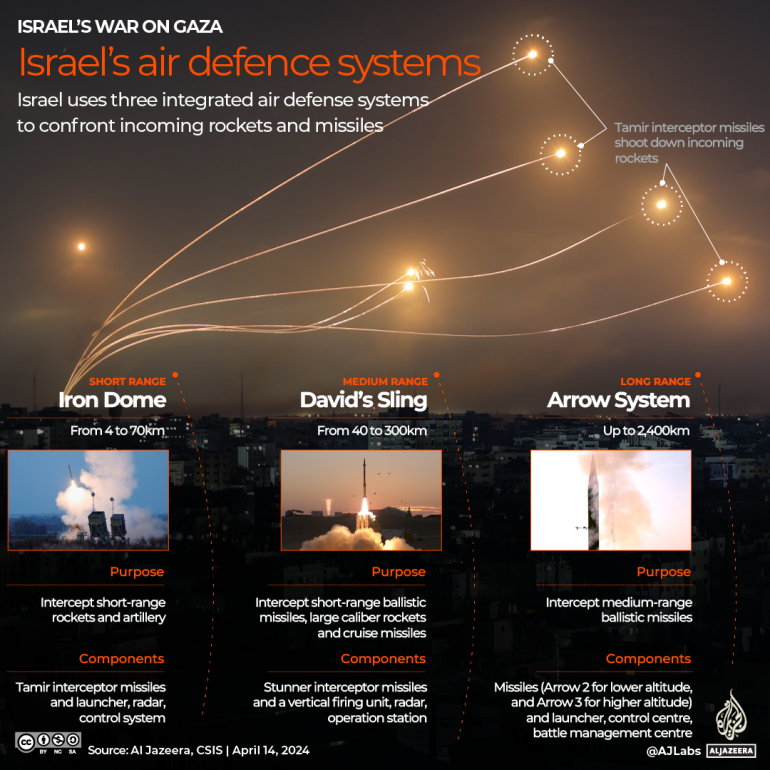ARTICLE AD BOX
Israel says it attacked some 30 Hezbollah positions in southern Lebanon overnight on Wednesday, a regular announcement as the two sides have been exchanging attacks for the past 11 months.
On October 8, Hezbollah began launching attacks on Israel in solidarity with the Palestinian people trapped in Gaza as Israel waged war on the enclave.
Israel has attacked Hezbollah nearly four times that of the Lebanese group, tallying more than 7,800 attacks along the 120km (75-mile) border.
Hezbollah, which was formed in 1982 to fight Israel’s invasion and occupation of southern Lebanon, says it will stop attacking Israel if its assault on Gaza stops. Its leader Hassan Nasrallah says the group does not seek an expanded war but is prepared to match Israel’s aggression.
Regarded as the most battle-hardened nongovernmental fighting group in the region, Hezbollah fought a 34-day war against Israel in 2006 that was widely seen as a strategic and military failure for Israel.
Some Israeli leaders have pledged to remove Hezbollah from southern Lebanon, even by force.
The attacks
According to the Armed Conflict Location and Event Data (ACLED), Israel exchanged at least 9,613 attacks with Hezbollah and other armed groups in Lebanon from October 7 to September 6.
About 82 percent of these attacks – 7,845 – were carried out by Israeli forces, which killed at least 646 people in Lebanon.
Hezbollah and other armed groups were responsible for 1,768 attacks that killed at least 32 Israelis.

In addition to Hezbollah – which mostly bore the brunt of the hostilities – other parties involved in attacks against Israel include Lebanese al-Fajr Forces and Amal Movement as well as Hamas’s Qassam Brigades and Palestinian Islamic Jihad’s al-Quds Brigades, both armed wings of Palestinian groups with a presence in Lebanon.

Israel has attacked these locations in southern Lebanon the most:
- Aita al-Shaab – 391 attacks
- Naqoura – 303 attacks
- Kfar Kila – 294 attacks
- Hula – 291 attacks
- Tayr Harfa – 246
Groups from Lebanon attacked these locations in northern Israel the most:
- Kiryat Shmona – 154 attacks
- Metula – 103 attacks
- Margaliyot – 99 attacks
- Manara – 91 attacks
- Shtula – 83 attacks
August 25 escalation
In the early hours of Sunday, Hezbollah and Israeli forces exchanged hundreds of attacks across the border in a marked escalation.
Israel called it a “preemptive” air attack on southern Lebanon, while Hezbollah said it launched hundreds of rockets at Israeli targets.
Nasrallah said the group launched hundreds of drones and rockets on northern Israel in retaliation for the killing of commander Fuad Shukr in July.
Israel’s Defence Minister Yoav Gallant declared a nationwide “special situation” for 48 hours.

Israel’s arsenal
Israel holds the most advanced missiles in the Middle East, many produced domestically, but most of its precision-guided missiles are from the United States.
According to the Center for Strategic and International Studies (CSIS), much of Israel’s capabilities are short-range tactical systems, including the Popeye, Extra and Gabriel missiles. Among its long-range missiles are Jericho 2 and Jericho 3 ballistic missiles with ranges of 1,500-3,500km (930-2,175 miles) and 4,800-6,500km (3,000-4,000 miles), respectively.
Also, despite not officially acknowledging it, Israel is believed to possess at least 90 nuclear weapons.

To confront incoming rockets and missiles, Israel uses three integrated air defence systems: the Iron Dome (short-range), David’s Sling (medium-range) and Arrow (long-range).
The Iron Dome was originally billed as providing city-sized coverage against rockets with ranges of 4-70km (2.5-43 miles), but experts say it has been expanded.
David’s Sling, produced by Israeli weapons giant Rafael, can intercept rockets and missiles with a range of 40-300km (25-186 miles). The Arrow series, led by the Arrow 3 interceptor, has an estimated fly-out range of up to 2,400km (1,491 miles).

Hezbollah’s arsenal
Hezbollah is considered to be one of the world’s most heavily armed non-state actors, with an estimated rocket arsenal of 130,000, according to CSIS.
On October 19, Israel’s Institute for National Security Research estimated that Hezbollah had 40,000 Grad-type missiles with a short range of 15-20km (9-12 miles).
A step up are 80,000 longer-range missiles, including the Fajr 3 and Fajr 5 ballistic missiles, with a range of 100km (62 miles).
Finally, there are about 30,000 Zelzal or Fateh-110 missiles with a range of 200-300km (124-186 miles) – the longest-range weapons in Hezbollah’s inventory, capable of reaching southern Israel.


 3 months ago
69
3 months ago
69








 English (US)
English (US)